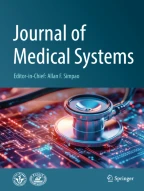Abstract
Hemodynamic indexes will change significantly compared to the normal range of many vascular diseases, therefore it is necessary to establish hemodynamic computation model. Blood circulation is periodically forced huge fluid flow network, the heart is generator of the entire fluid network, based on this hemodynamic characteristics, the circle of Willis’s structure is simplified from the perspective of network and hemodynamics. According to hemodynamic equations and circuit graph theory, models blood flow network of the periodically forced hemodynamic equation, obtains the approximate solution of the harmonic waves form based on averaging computation. We apply this model in the network of the circle of Willis, which may help explain the development processes of cerebral circulation disease. The simulation results show that computing results consistent with the clinical observation of blood flow changes in cerebral infarction.
Similar content being viewed by others
References
Hillen, B., Hoogstraten, H. W., and Post, L., A mathematical model of the flow in the circle of Willis. J. Biomech. 19(3):187–194, 1986.
Jou, L. D., Lee, D. H., and Mawad, M. E., Cross-flow at the anterior communicating artery and its implication in cerebral aneurysm formation. J. Biomech. 43(11):2189–2195, 2010.
Šutalo, I. D., Bui, A. V., Ahmed, S., Liffman, K., and Manasseh, R., Modeling of flow through the circle of Willis and cerebral vasculature to assess the effects of changes in the peripheral small cerebral vasculature on the inflows. Engineering Applications of Computational Fluid Mechanics 8(4):609–622, 2014.
Ursino, M., and Giannessi, M., A model of cerebrovascular reactivity including the Circle of Willis and cortical anastomoses. Journal Annals of Biomedical Engineering 38(3):955–974, 2010.
Blanco, P. J., Watanabe, S. M., Passos, M. A. R. F., Lemos, P. A., and Feijoo, R. A., An anatomically detailed arterial network model for one-dimensional computational hemodynamics. IEEE Trans. Biomed. Eng. 62(2):736–753.
Sui, J. X., Yang, L., and Shi, H. Z., Hemodynamic assessment and computation on vertebral artery stenosis. Technol. Health Care 23(s1):S83–S88, 2015.
Gonzalo Domínguez, M., Hernández, C., Ruisoto, P. et al., Morphological and Volumetric Assessment of Cerebral Ventricular System with 3D Slicer Software. J. Med. Syst. 40:154, 2016.
Sui, J., Yang, L., and Hu, Y., Complex fluid network optimization and control integrative design based on nonlinear dynamic model. Chaos, Solitons Fractals 89:20–26, 2015.
Koroleva, O. I., and Krstic, M., Averaging analysis of periodically forced fluid networks. Automatica 41(1):129–135, 2005.
Yang, L., Sui, J., Li, S., and Shi, H., Nonlinear hemodynamic difference equation control modelling with constraints and medication of cerebrovascular disease. Journal of Difference Equations and Applications 23(1–2):42–54, 2017.
Sui, J., Yang, L., Li, S., and Shi, H., Blood circulation diseases treatment based on decentralized adaptive control. J. Intell. Fuzzy Syst. 33(5):2851–2860, 2017.
Zhang, X., and Wang, W., The pulse harmonic spectral analysis - Chinese medicine pulse-taking research new method. Chinese Journal of Integrated Traditional and Western Medicine 15(12):743–745, 1995.
Acknowledgements
The work is supported by Natural Science Foundation of Shandong Province (ZR2016FM25).
Author information
Authors and Affiliations
Corresponding authors
Ethics declarations
Conflict of interest
Jinxue Sui has received research grants from Natural Science Foundation of Shandong Province (Grant: ZR2016FM25). Jinxue Sui, Li Yang, Xinguang Zhang, Hongzhi Shi and Ya Hu declare that they have no conflict of interest.
Human and animal rights
This article does not contain any studies with human participants or animals performed by any of the authors.
Additional information
This article is part of the Topical Collection on Systems-Level Quality Improvement
Rights and permissions
About this article
Cite this article
Sui, J., Yang, L., Zhang, X. et al. Hemodynamic Solution Computation and Pathological Analysis in the Circle of Willis. J Med Syst 42, 178 (2018). https://doi.org/10.1007/s10916-018-1032-4
Received:
Accepted:
Published:
DOI: https://doi.org/10.1007/s10916-018-1032-4
